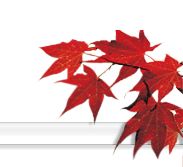| Watling, Thomas
|
| [1794?] |
| 23.2 x 20.5 cm |
| Watling Drawing - no. 355 |
|
| hide detailed image description |
Bird, its body facing right and its head turned in profile to the left. It is depicted standing on a river bank with water in the foreground, in front of a distant landscape of hills. The bird has a brown bill, a blue eye and red legs. Its upper parts are predominantly black, with a white-grey patch on the rump and around the back of the neck, and white-grey underparts. The drawing is framed by a pencil border and annotated in ink and pencil; there is also an ink inscription on the reverse, which has stained the front of the drawing.
|
|
| hide notes |
- Thomas Watling]
- The drawing is signed at bottom right "Thomas Watling delt.". It is dated on the reverse and on a separate sheet mounted below the drawing "January 2nd 1794".
- The drawing has been annotated in ink at top right with the number "288.". This refers to the catalogue list compiled by John Latham c. 1801 which was acquired with the drawings, and is filed with them at the end of the Watling Drawings series.
- The drawing is annotated in very faint pencil at top "Semi palmated Duck Syn Sup ii 346 pl. 139.". This has been copied in ink at bottom "Semipalmated Duck. Latham Syn Suppt 2. p. 347 Pl. 139". The page reference is to Latham's Second Supplement to the General Synopsis of Birds (1802).
- This bird was more recently identified as the Pied Goose, Anserana semipalmata in Hindwood K. A (1970).
- The drawing is annotated in pencil at top "Lambert Drawing I. 74". This refers to a related set of drawings from the collections of the 13th Earl of Derby, held in the Library at Knowsley Hall, Lancashire.
- A partial annotation in ink is visible on the reverse of the drawing, the edges of the text having been lost when the drawing was cropped. What remains reads "the Skin before it enter'd the Thorax -, An Officer lately has seen one opened & confirms the truth the sportsmans observation - It is call'd by us the N.S.W. goose tho only Palmated instead of being footed, because its manner as well as taste and flavo remsembles [sic] that bird more than any other. The con or general likeness is here very well observed. I have inform'd that at times their note is tuneful & melodious which appears probable from the conformation of the wind pipe, if that singular circumstance is true. I have no man out attending a pond where they most frequent opes of getting one for Dissection. They have only lately be bserved & that principally one a pond near the Hawksbury Jan.y 2nd 1794 -"
- A separate sheet of laid paper measuring 10.1 x 18.4 cm. is mounted below the drawing. It is inscribed in blue pencil at bottom right "288." It is inscribed in pale brown ink at top left with a symbol comprised of four small circles arranged in a diamond pattern, followed by the main text, which reads "This Bird is the size of our native wild Goose. They are generally found in flocks and sometimes perching upon high trees. It has been observed by the Man who sometimes shoots these Birds, that in opening some of them, but not all that the Wind pipe formed several beautifull circumvolutions on the Breast, under the skin before it entered the thorax. An officer lately has opened one and confirms the truth of the Sportsmans observations. It is called by us the New South Wales goose, Palmated instead of being Web footed, because its manner as well as taste and Flavour resembles that Bird more than any other, The contour or general likeness is here very well observed. I have been informed that at times their Note is tunefull and Melodious, which appears probable from the conformation of the Wind pipe, If that singular circumstance is true. I have now a Man out attending a Pond where they most frequent, in hopes of getting one for dissection. They have only lately been observed, and shot principally on a Pond near the Hawksbury River. January 2= 1794 Native Name Now-al-Gang".
- The author of this catalogue record is Suzanne Stenning.
- By permission of the trustees of the Natural History Museum (London)
- Two sets of transparencies held in the Natural History Museum (London) Zoology Library and Picture Library: Picture Library reference number 12355
- James Lee of Kensington : purchased ; 1902
- Data sheet available.
- Latham, John. Supplement II to the General Synopsis of Birds. London: Leigh, Sotheby, 1802.
- Hindwood K. A. 'The "Watling" drawings with incidental notes on the "Lambert" and the "Latham" drawings', Proceedings of the Royal Zoological Society of New South Wales for the years 1968-69 (1970).
- Wheeler, A. and Smith, B, The Art of the First Fleet and other early Australian Drawings. New Haven and London, Yale University Press, 1988. (Plate 205, p. 192).
- This drawing is reproduced in Wheeler, A. and Smith, B, The Art of the First Fleet and other early Australian Drawings. New Haven and London, Yale University Press, 1988. (Plate 205, p. 192).
|
|
|


![[Pied Goose, Anseranas semipalmata ]](image.dsml?imageref=NHM-UK_L_a350963_355_M_1.jpg&width=300)